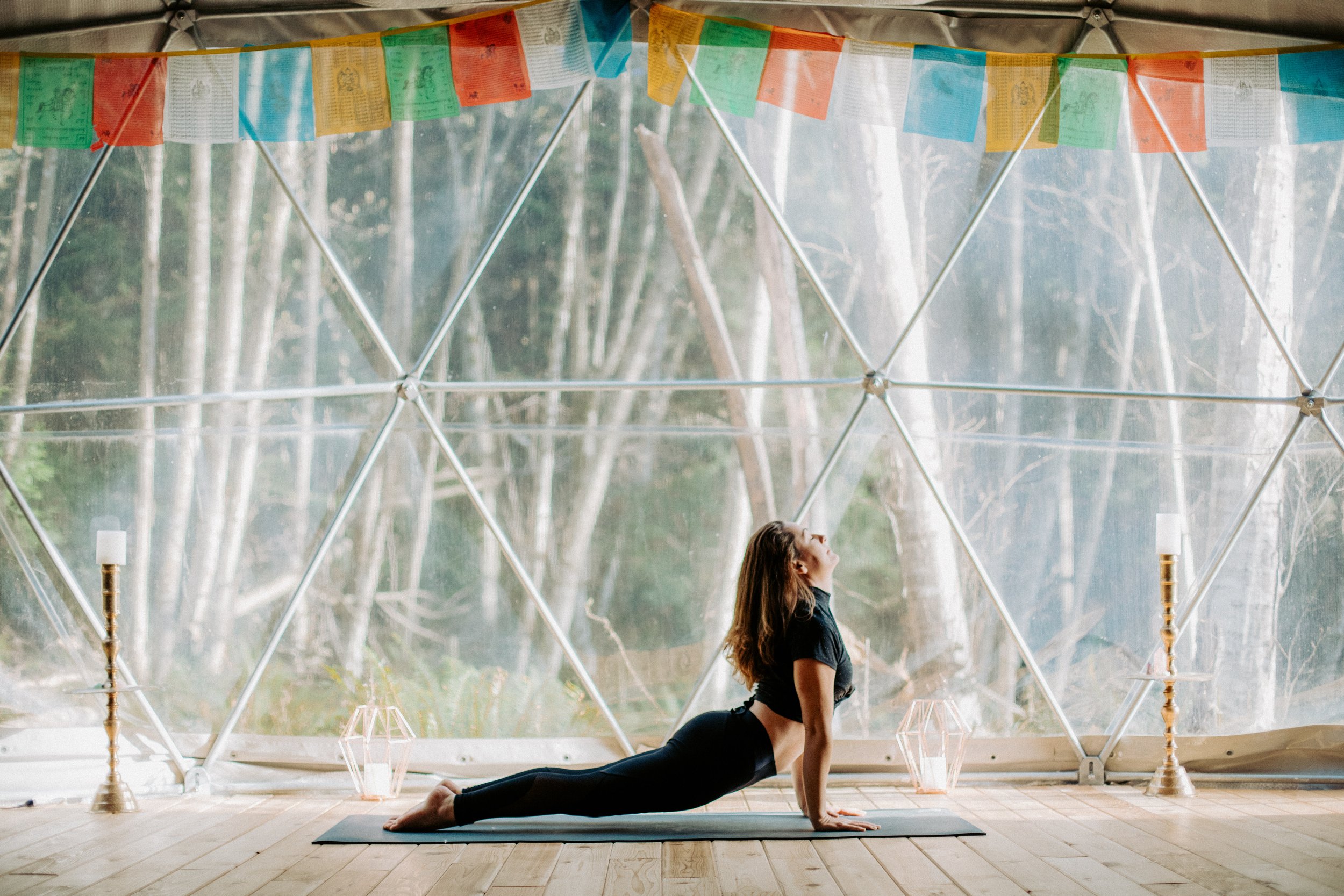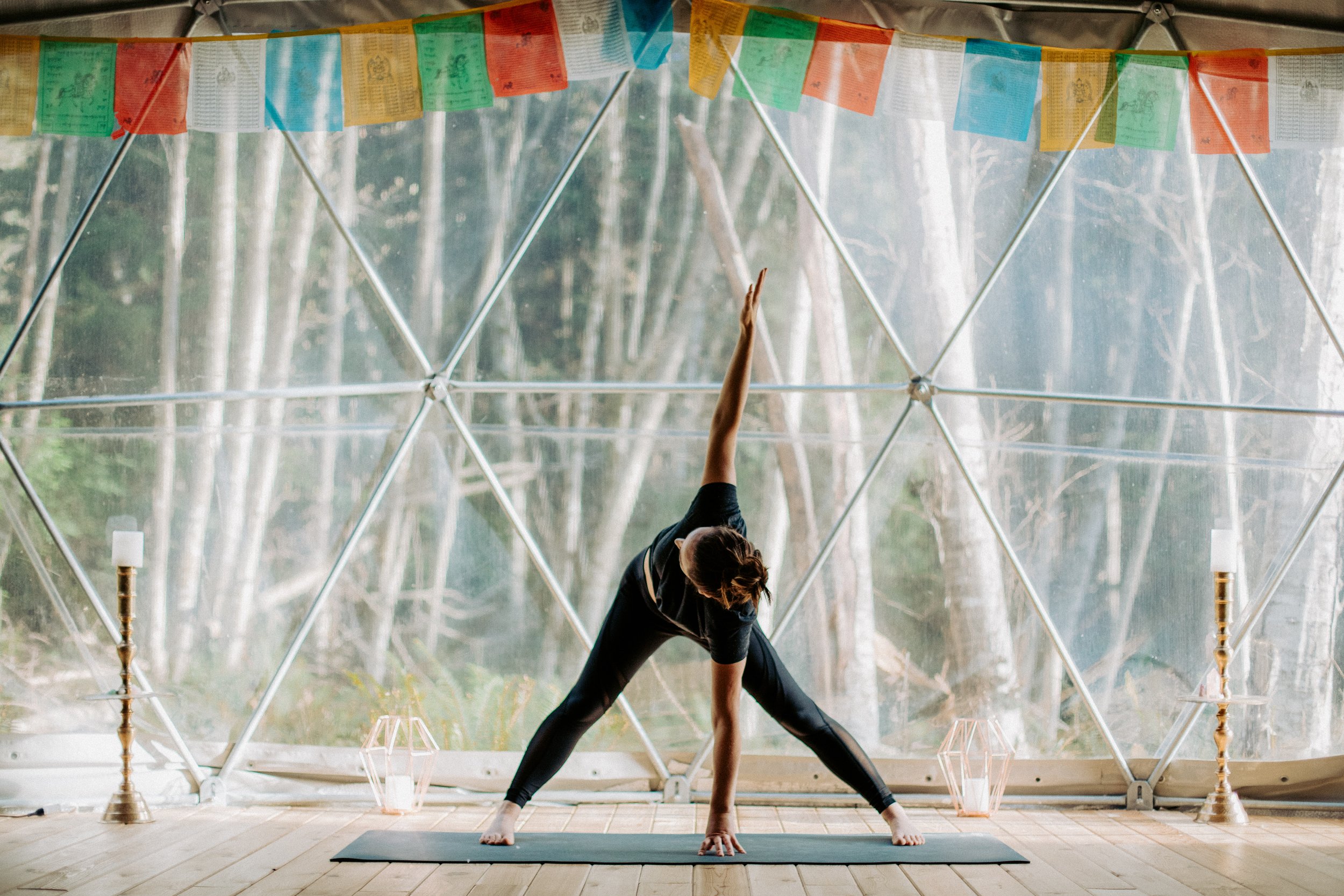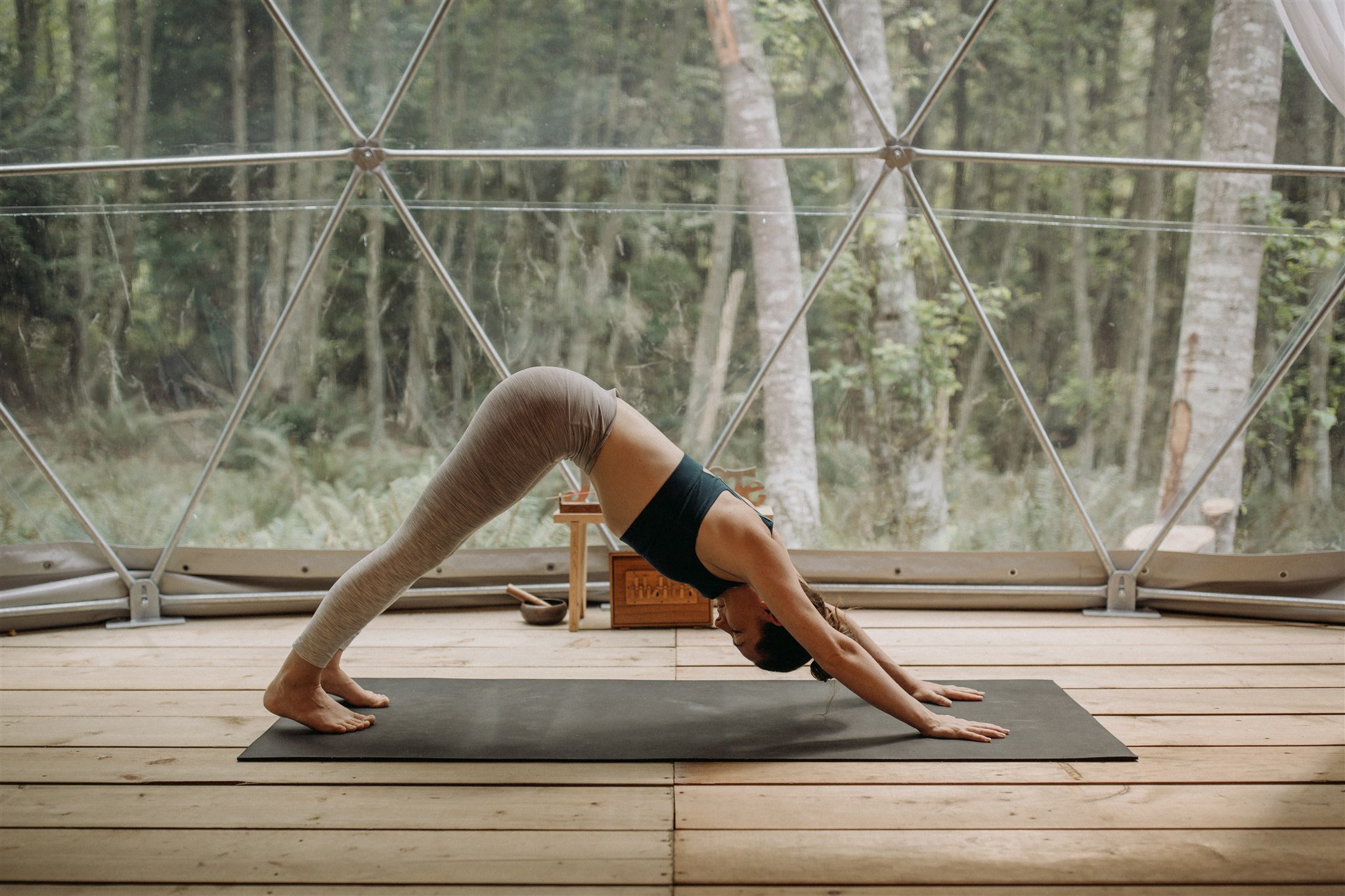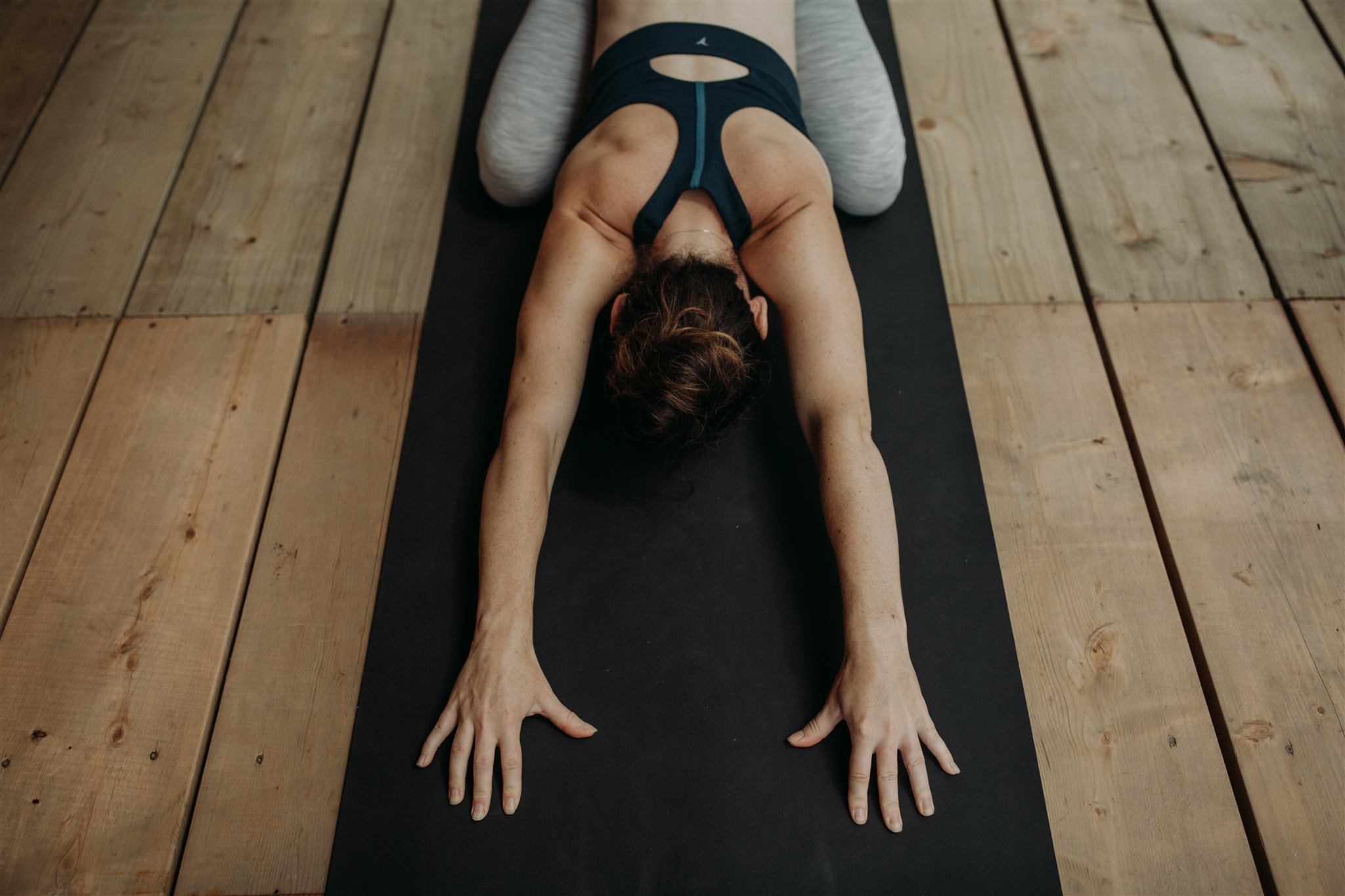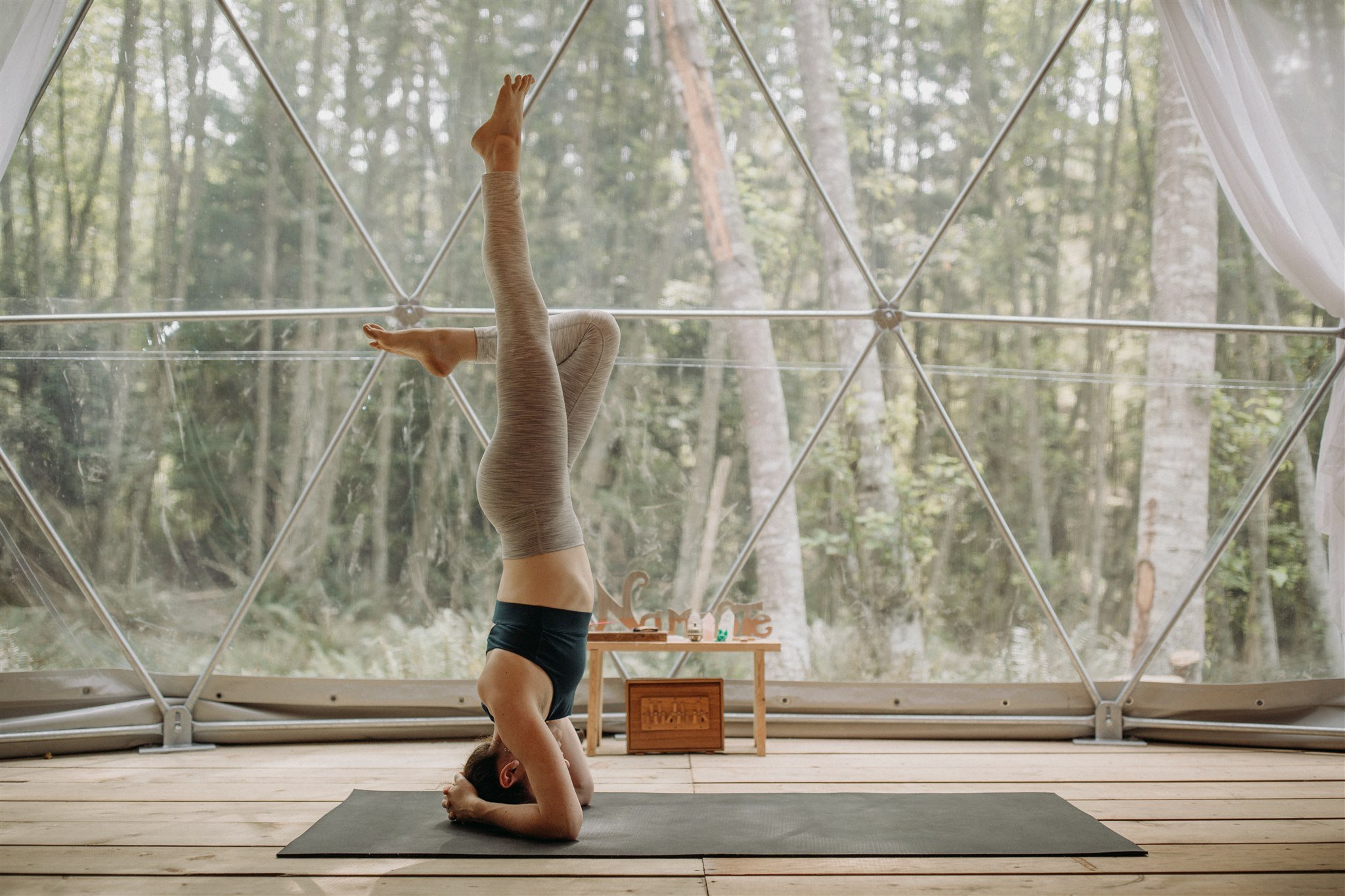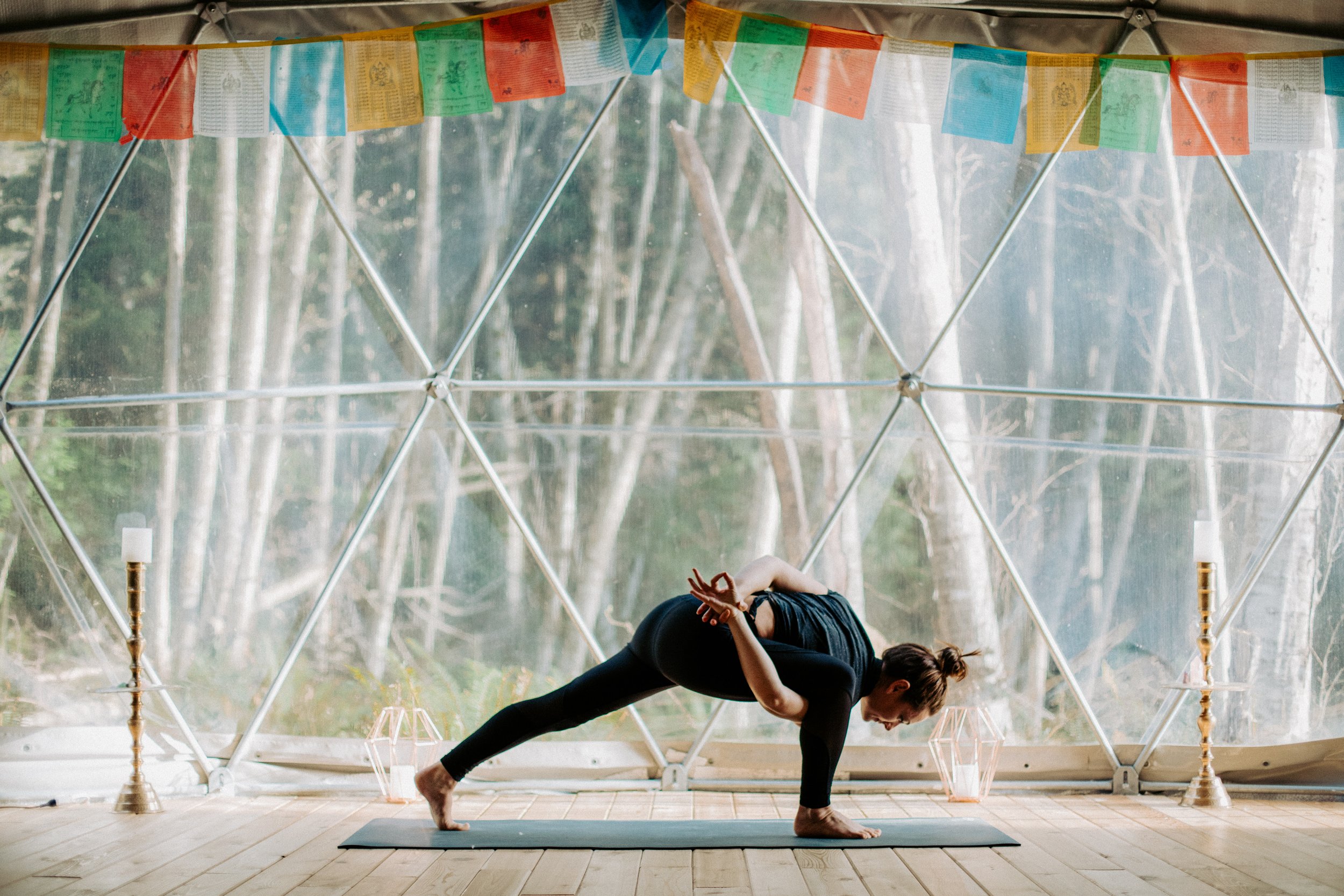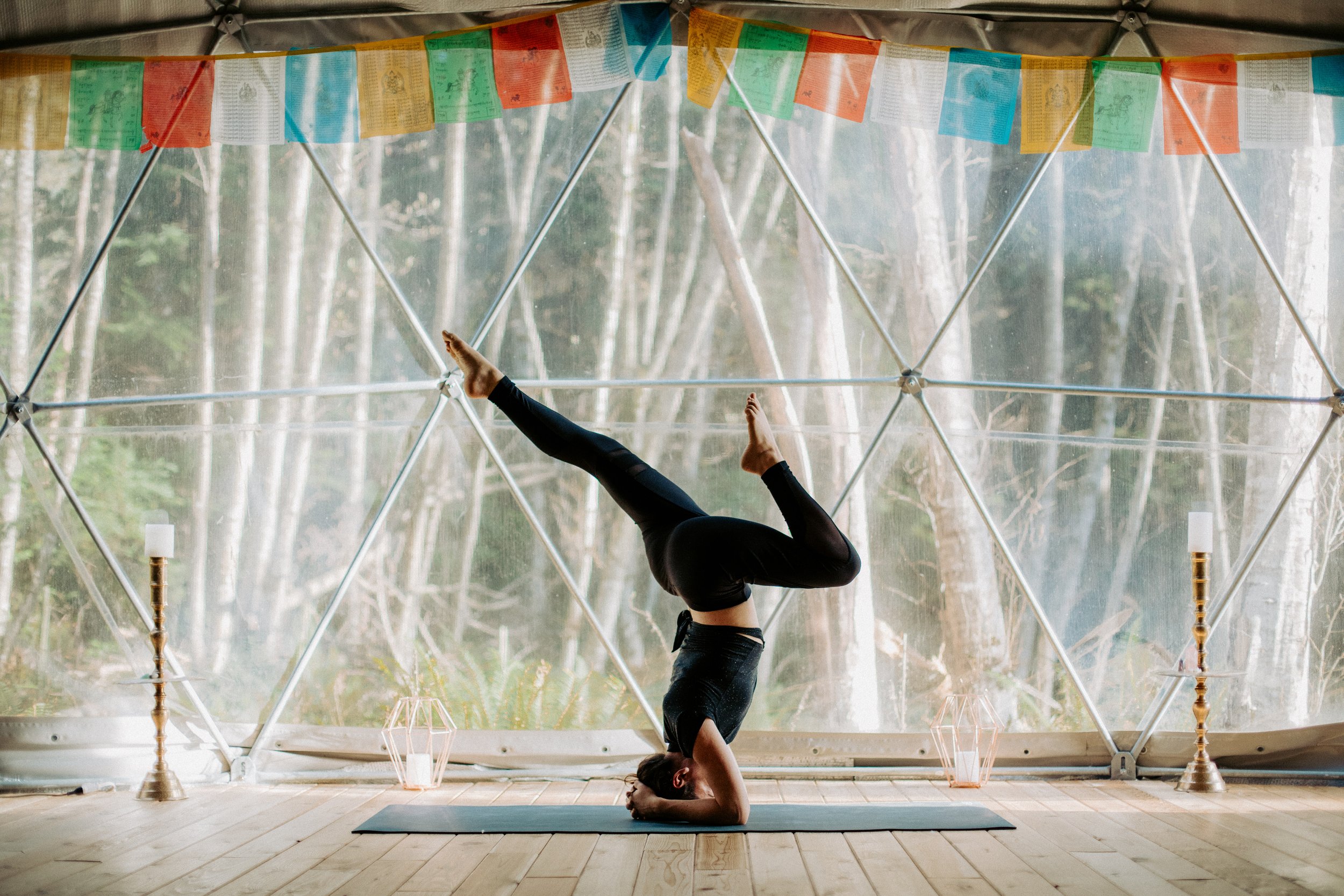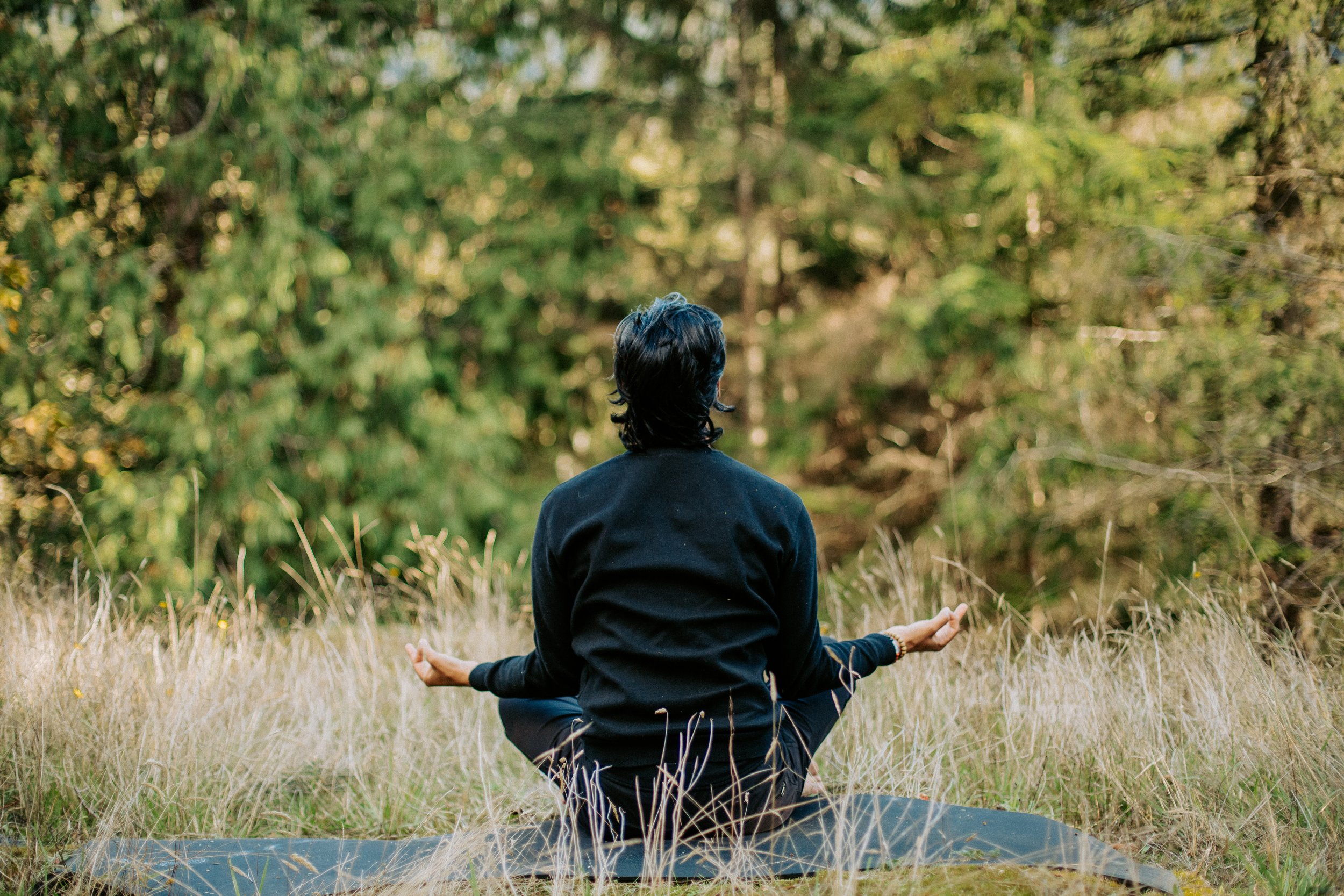This limb has become equated to ‘the yoga practice’ in the modern western world, yet it is only one of many other limbs that make up the true yoga practice. In the yogic view, the body is a temple of spirit, the overall and complete care of which, is an important stage of our spiritual growth.
Through the practice of physical postures we develop the habit of discipline + the ability to concentrate, both of which are necessary for cultivating healthy routines in life.
Asana is outlined in Patanjali’s Yoga Sutras, a collection compiled around 400 C.E. This was the first text to codify the practices of yoga, and is considered to be the foundation of classical yoga philosophy.
Sutra 2.46 outlines the qualities required in order to practice asana: “Sthira Sukham Asanam”. In Sanskrit, Sthira translates to strong, steady or stable, whilst Sukha translates to: ease, comfortable, relaxed. From this, Asana is described as a balance between stability + ease.
The Yoga Sutras only refers to postures used for seated meditation, however this description of Asana is also relevant to standing postures and all modern forms of the practice. Regardless of the style of yoga, practitioners are generally encouraged to seek a position that is both steady and comfortable.
According to Patanjali, the primary focus of Asana is to move to, and maintain a long and upright spine in order for energy to flow freely during seated meditation. Although modern Asana alignment cues are not limited to seated postures, you may notice that teachers will still tend to focus on the direction and free flow of energy within the body during a class.
Different texts and teachers throughout history have outlined varying numbers of Asana. The classic texts of Hatha yoga as taught by Lord Shiva, account for 84 postures, specifically highlighting that the first four are necessary to achieve spiritual perfection.
These postures are:
Siddhasana (Accomplished Pose)
Padmasana (Lotus Pose)
Bhadrasana (Gracious Pose)
Simhasana (Lion Pose).
Other scriptures, such as Gheranda Samhita (which highlights a seven-fold yogic path,) suggest that there are as many as 8.4 million yoga postures, to reflect one for each living creature in the universe.
More recently, Sri Dharma Mittra compiled a list of 1,300 Asana.
Different Types Of Asana Yoga
Hatha
Beginning with the foundational yogic tradition, Hatha yoga consists of asanas ideal for the beginner student. Poses are typically gentle with a moderate amount of flow. The pace is slower than most forms of yoga and the practice accessible to people of all ages and levels of fitness. Hatha yoga is all about balancing the solar and lunar energies within each and every one of us.
Vinyasa
Vinyasa yoga is currently one of the most popular forms of yoga. It consists of linking the breath with the movements in a fluid sequence, which is especially helpful for beginners. It is can be suitable for all levels, depending upon the particular class. Most classes begin with the flowing movements of Sun Salutations, and then move on to integrate other Asanas.
Yin
Yin yoga is a type of restorative practice based on the traditional Daoist philosophy of the energies of yin and yang with the aim of the practice being to evoke the effects of yin energy, allowing the body to fall into its’ natural state of equilibrium + relaxation.
Yin yoga practice is accessible to yogis of all levels of physical fitness. During a Yin yoga class, each asana is held for a long period of time, typically three to five minutes or longer. The goal is to reduce muscular engagement and target connective tissues instead. This leads to an overall deeper stretch and increased relaxation.
Ashtanga
The Ashtanga yoga system was made popular by the beloved teacher, Pattabhi Jois. Although Pattabhi Jois has left this physical world, his legend lives on in the Ashtanga yoga system, which is one of the most physically challenging of them all. This is the type of yoga to go to if you want an intense workout, as well as a very regulated set of Asanas.
Despite the fact that the Ashtanga yoga sequences are always the same, they get harder and harder as you move through the levels, keeping the practice forever new and challenging. This style of yoga takes discipline, but the rewards are many.
Jivamukti
Jivamukti finds its origin in the Ashtanga style, but with other elements mixed in. This style —invented by partners, David Life + Sharon Gannon — is strict and structured similar to the style Ashtanga, but with the added practices of kirtan (chanting), meditation and spiritual teachings. It is both physically challenging and spiritually rich —perfect for the modern-day yogi seeking a great workout paired with soulful inspiration and rich teachings.
Viniyoga
Viniyoga is a style of yoga that finds its origins in the teachings of T. Krisnamacharya + his son, T.K.V. Desikachar. A Viniyoga class is often taught privately, with a sequence tailored to fit the needs of the student based on age, physical condition and current overall level of well-being. It focuses upon the movement of the spine as well as the movement of the breath.
Iyengar
Iyengar yoga was made popular by B.K.S. Iyengarnfrom Pune, India. This style is known for being heavily alignment-based, and incorporates the use of various yoga props, such as straps, blocks + blankets into the practice. High attention is given to the details of each posture, as the poses are held for longer periods of time than in Ashtanga or Vinyasa yoga classes.
Anusara
Anusara is a style that became well known by a modern day yoga teacher named John Friend. It revolves around the philosophy opening the heart, as well as the practices of Tantra. Similar in ways to Iyengar yoga, Anusara focuses on an alignment-based system, with an emphasis on therapeutic Asanas. It is often characterized by uplifting philosophy interwoven in the teachings and is a suitable style for any level of yogi.
Kundalini
This style of yoga Asana is a spiritually rigorous yoga practice with a focus pranaymama (breathwork), chanting and kriyas, which are repetitive and often fast-paced movements. The aim of Kundalini yoga is to unleash the energy which lies dormant at the base of the spine. Attention to breath control as well as the bandhas ( internal locks) are a huge aspect of this style of yoga. Kundalini yoga is a powerful practice and should be done with the guidance of an experienced teacher.
Sivananda
Sivananda yoga is a more traditional form of yoga that focuses on the following: a sequence of 12 specific Asanas, Pranayama, yoga philosophy, relaxation, meditation and a vegetarian diet. Although it is a disciplined style, it is still accessible to most levels.
Bikram
This style of yoga is also known as “hot yoga,” in the western-modern world. It is practiced in a room heated between 95 - 105 degrees Fahrenheit, which allows the muscles, ligaments and tendons to loosen up. This is one of the most vigorous forms of yoga and not an accessible practice for all-levels of yogis or certain body types.
Forrest
Created by Ana Forrest — this is another style of highly physical practice. Its primary intention of this practice is to promote deep physical and emotional healing, with an emphasis on deep abdominal breath work, to help stoke the fires within while cleansing the connection of mind and body.
Asana is best to be practiced on an empty stomach, and without using excessive force or pressure to move into a posture. To enhance the benefits of any physical yoga pose, it can be combined with pranayama practices, such as Ujjayi or Kapalbhati.
Regardless of the yoga style, Asana should always be practiced with mindful awareness, as a means of uniting the body, breath and mind. Specific Asana can be used therapeutically to help alleviate specific health problems or physical issues under proper guidance, teaching and body awareness.
Gratitude to our community near and far, both for taking the time to explore our blog and for walking the path to your best self - we hope this resonated and aids you in finding balance within.
Thanks and credit goes to the resources for this blog provided by the writers at Eckhart Yoga + Yogapedia
Let us know in the comments which style of Asana you prefer to practice!
All Photos - Nectar Yoga Copyright


